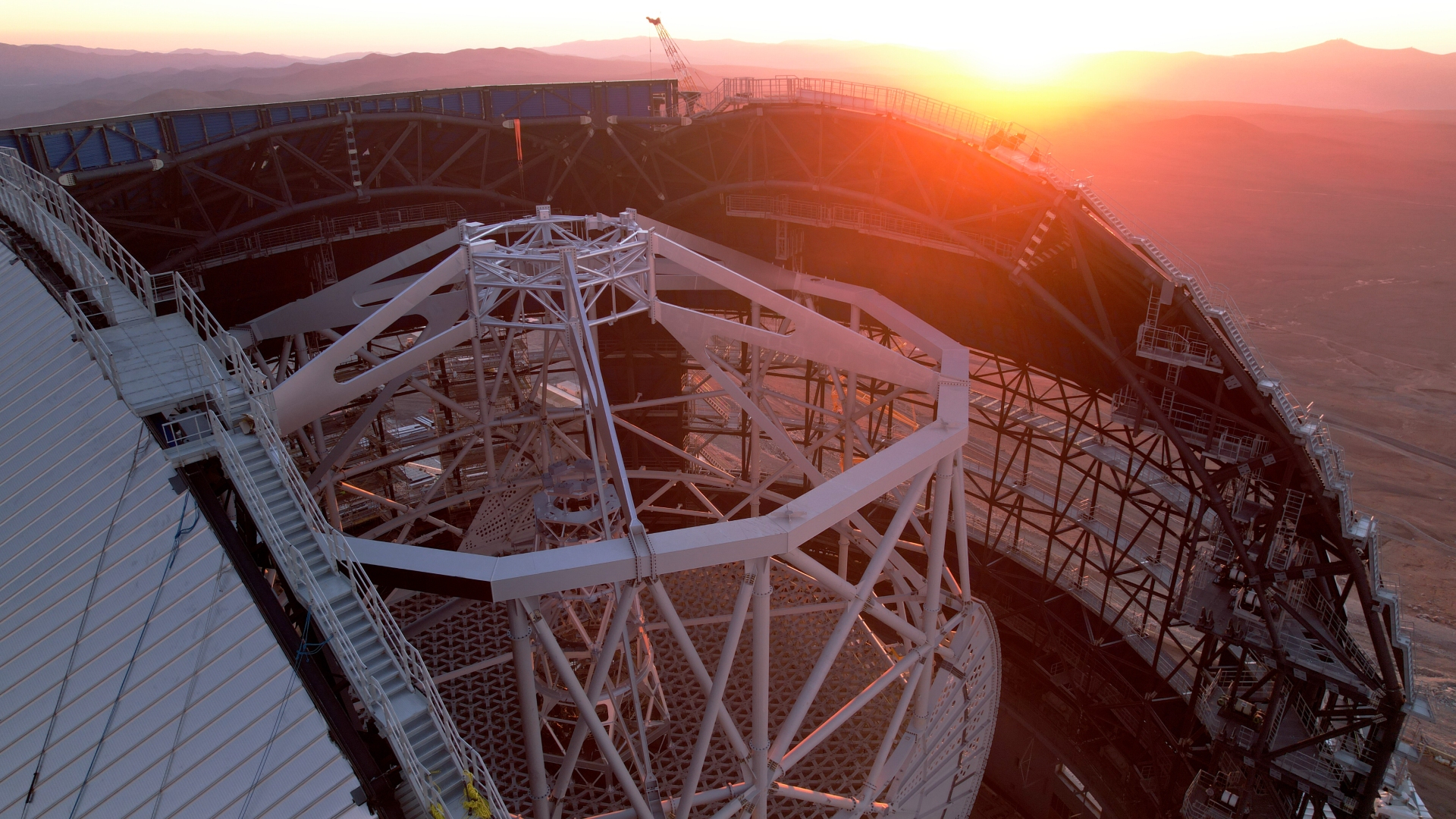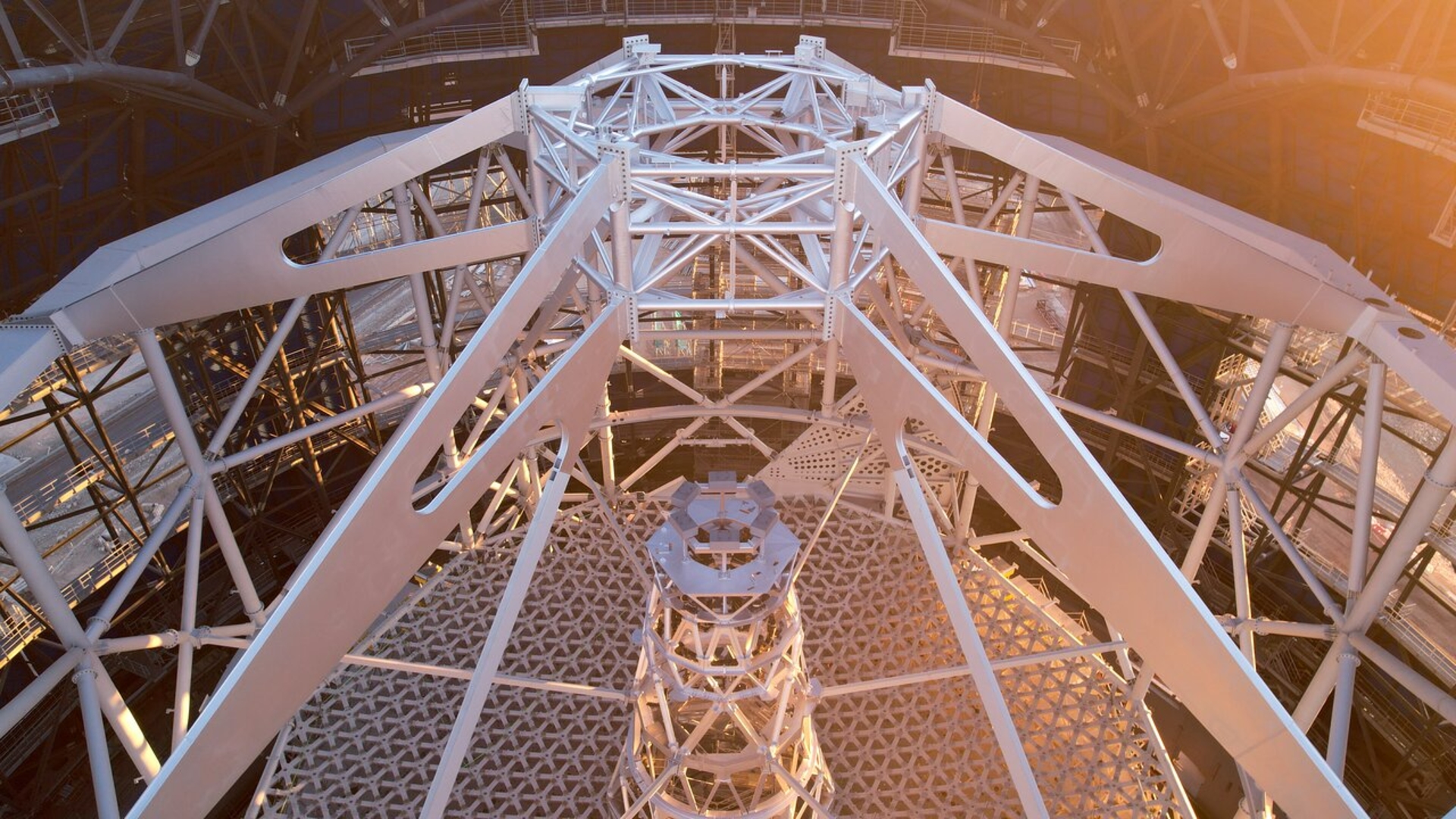The frame of the dome that will house the world’s largest telescope has been completed, marking another key milestone in the observatory’s construction.
The European Southern Observatory’s (ESO) Extremely Large Telescope (ELT) — the world’s largest visible- and infrared-light telescope — is currently under development on the Cerro Armazones mountain in Chile’s Atacama Desert. The mighty telescope is expected to see its “first light” by 2028.
New photos from the ESO show that the dome’s frame is now completed, while the outer shell that will fully enclose the telescope is still under construction. Plates of aluminum will be added to the exterior of the frame to protect the telescope from the extreme environment of the Atacama desert, including variable temperatures, according to a statement from the observatory.
The dome measures 305 feet (93 meters) in diameter, or about the size of a football field and stands 263 feet (80 meters) tall. The dome will house the ELT, which aims to observe terrestrial exoplanets and their atmospheres, as well as measuring the expansion of the universe.

The latest progress photos taken in January 2025 show cranes busy at work installing the outer aluminum layers, also known as cladding. Part of the dome will have large sliding doors, which will remain closed during the day and open at night, allowing the telescope to survey the sky.

Progress has also been made on the polygon structure at the base inside of the dome that will support the telescope’s main mirror (M1), and on the “spider” structure on top of it, which will hold the secondary mirror (M2) in the center. M1 will measure a whopping 128 feet (39 meters) across, while M2, which is expected to be completed later this year, will measure 14 feet (4.25 meters) in diameter. The telescope will have three smaller mirrors, for a total of five once complete.

ESO also shared an up-close view of the inner frame of the “spider” structure, named for its arching shape poised above the base, with six arms reaching out from its center. While the skeleton itself is complete, it is waiting to receive all of the individual segments that will make up the five mirrors. M1 alone will consist of 798 glass ceramic hexagonal segments, each of which measure about 2 inches (5 centimeters) thick and about 5 feet (1.5 meters) across. When fully assembled, M1 will be the largest mirror ever built for an optical telescope.

The central tower below the “spider” structure will support the ELT’s remaining three mirrors. These components — the central tower, spider structure and polygon base — are all hosted on what is called the altitude structure. This metal frame stands 164 feet (50 meters) tall and is designed to carry all 5 mirrors of the ELT and rotate so that the telescope can be pointed at different parts of the sky.








Leave a Comment